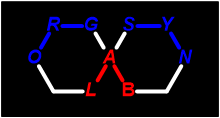We are focused on better understanding of the interactions between microbial cells and nanoparticles which allow us to design better biosensors, to reveal the nano-toxic effect of different raw and functionalized nanomaterials, as well as to design efficient antimicrobial formulation based on colloid particles. Our recent development of colloidal bioimprints capable of cell shape recognition allowed us to address specific cells and deliver antimicrobial agents directly to their surface while leaving the other cells unaffected.
We are a group of young and enthusiastic synthetic chemists interested in development of novel economical and efficient catalytic systems for organic transformations and processes relevant to the search of alternative carbon and energy sources. Our research is mainly focused at the chemistry of non-precious transition metal complexes and touches many synthetic, structural and theoretical aspects of coordination and organometallic chemistry including bond theory, ligands design, mechanisms of reactions, multinuclear NMR spectroscopy and single crystal X-Ray diffraction analysis.
"Chemistry without catalysis, would be a sword without a handle, a light without brilliance, a bell without sound"
Alwin Mittasch (1869-1953, Germany)
SESBL research area is at the interface of analytical chemistry, physics (plasmonic) and biology. We explore surface enhances spectroscopies such as Surface Enhanced Raman Spectroscopy (SERS) and Surface Enhanced Fluorescence (SEF) in sensing applications, including detection of biomarkers. There are serval directions of research: SERS sandwich immunoassays of biomarkers on non traditional plasmonic substrates, SEF of cells modified with quantum dots on various substrates, detection of high protein content in urine by SERS and Raman spectroscopy as well as study of SERS fundamentals: relationship between enhancement and structure of nanoaggregates. We got experience not only in publishing papers based on our own experimental results, but also in writing and publishing review papers on topics related to analytical chemistry in such journals as Talanta, Sensing and Biosensing research, Analytical Methods. Our group currently includes 2 - 3 Research assistants, one master degree student, who started to work in the group as undergraduate 2nd year student and who already co-authored 5 paper, including 3 Q1 papers, and several undergraduate students.
With the recent advancement of theory, algorithms, and computational power various researchers are now relying on computers to scan and handle data critical to the understanding, search, and discovery of various functional materials. The fmc2 laboratory uses a combinatorial approach (theoretical and experimental approach) in solving various problems our society is experiencing right now especially in energy, environmental and biomedical problems. Our current focus is to develop a cost-effective hybrid/organic solar cell (dye-sensitized, organic, and Perovskite) that could easily be incorporated as building adaptive/integrated photovoltaics (BAPV/BIPV). We are also designing, synthesizing, and fabricating new catalysts for energy and environmental applications from multinary non-precious transition metal sulfides/oxides; metal-organic frameworks; and doped carbon nanodots.
We are a protein chemistry lab working at the interface of organic chemistry and biochemistry focusing mostly on chemistry and biochemistry of methylglyoxal and related dicarbonyl compounds. Methylglyoxal is known to be a byproduct of glycolysis and can damage proteins and DNA leading to a variety of pathophysiological conditions. Currently, several projects in the lab are underway to gain new knowledge on biochemistry of methylglyoxal its derivatives as well as on enzymes involved in its detoxification.
AdvNanoLab is a group of highly motivated young researchers working on the edge of several disciplines, such as chemistry, materials science, physics, and biology. We are particularly interested in the design and applications of 0, 1, 2, and 3D nanostructures with unique optical, electrical, magnetic, and catalytic properties. Our recent nanotechnology-driven developments can be useful to tackle real-world issues such as the protection of UV-sensitive solar panels, wastewater treatment, green hydrogen production, bioimaging, and the development of selective and sensitive sensors.
Synthetic organic chemistry is the very basis of small molecule pharmaceutical research and development. Having a number of strategies in its arsenal, synthetic organic chemistry is successfully solving numerous practical problems, at the same time, fascinating with fantastic challenges and mind-breaking, detective-like mysteries. Our group is motivated to development of novel synthetic methodologies and green organic synthesis. Our efforts are in two main directions, the utilization of annulation reactions and electrochemical methods in synthetic organic chemistry. Annulation reactions allow for de-novo assembly of the fused and spirocyclic rings, incorporating essential heteroatoms and decorated with functional groups. Such molecules can be used as a platform for the synthesis of compound libraries in the targeted search for biological activity. Organic electrochemistry takes its roots from the pioneering works of Kolbe and Faraday in the 19th century and passed a long way of becoming. However, in the last decade, it is experiencing a true renaissance, supplying synthetic chemistry with unique and enthralling solutions for molecule transformations. Thus, electrochemistry provides greener and safer protocols along with unusual reactivity of molecules via oxidative or reductive generation of highly active intermediates under mild conditions.










